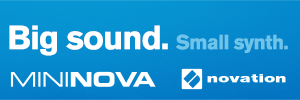
You might remember the Buchla 281 clone project from
this post, or if you frequent electro-music.com you'd of course remember it from there. I came across
an update to the thread by josh, aka topp. I thought it was a good insight into how he created panel graphic for his module.
"so i just wrote someone alot about how i labeled my most recent panel and i thought maybe someone here may find it helpful too. it involves laser transparency paper and spray adhesive... very durable!
1. print the art in reverse [so that the toner will contact the panel and stay protected]
2. cut it to where you have a bit of excess on all sides, maybe 1 1/2" orso
3. tape your painted, drilled and otherwise finished panel down with double-sided tape
4. position your 'decal' properly over the panel
5. tape the top-edge [you could do the side edge too] of it down to your work surface with masking tape while keeping it in position [remember you left some excess]
6. make sure your tape is stuck well, fold the decal back on the tape 'hinge' make sure when you pull it back over the panel, it stays in perfect position [ i learned this simple technique while working in a sign-shop applying vinyl decals to things, i think it is called the 'hinge' technique if you want to look it up]
7. pull it back again, and give the panel and the decal an even coat of spray-adhesive [i used 3M general purp.] let it dry for 10-15 seconds, as the instructions say for a stronger bond
8. then carefully!! fold it back over, keeping the 'hinge' pulled taut, with your thumb,start to 'apply' the transparency like a sticker, use alot of pressure and consistent coverge, side-to-side, continue to lower the decal onto the panel while and keep smoothing it down, don't push too hard where you have holes drilled right now.
9. get it all down, then press hard around all the edges, this is probably the most important part- work FAST! that stuff dries super fast
10. remove the masking tape hinge carefully so that your sheet is all flat, you don't want any resistance.. press the sheet down all over, then press around the holes, keep doing it for like a minute or two-i suppose a rubber mallet might be good to use here if you have one. i don't, i just pressed as hard as i could till i was confident that i could do no more.
11. ok, so it is down and all flat, now let it dry for a while, maybe over night.
12. flip it over and trim the excess off with an exacto knife
13. with fine sandpaper, carefully sand the edges to where there is no transparency protruding over the edges. it might be easiest to tape the sandpaper down flat, and move the panel instead.
14.ok so it is looking nice now right?? remove ALL the gunk from the transparency with denatured alcohol, then with the finest steel-wool you can get, ruff up the surface of the plastic, it will take the glare off it.
15. all that is left is to cut out your holes with an exacto knife. try your hardest not to lift the decal around the holes [use a narrow blade]
ok that's it! maybe a print-shop could do light print with a color-laser printer, or make long prints for rack-panels..
here is a photo of the panel::
josh"
 via Ryan on AH: "Thought some folks might enjoy this scan of a '97-era MOJO half-column article w/ Keith Emerson talkin' Moog. Familiar stuff, but still enjoyable"
via Ryan on AH: "Thought some folks might enjoy this scan of a '97-era MOJO half-column article w/ Keith Emerson talkin' Moog. Familiar stuff, but still enjoyable"


















































